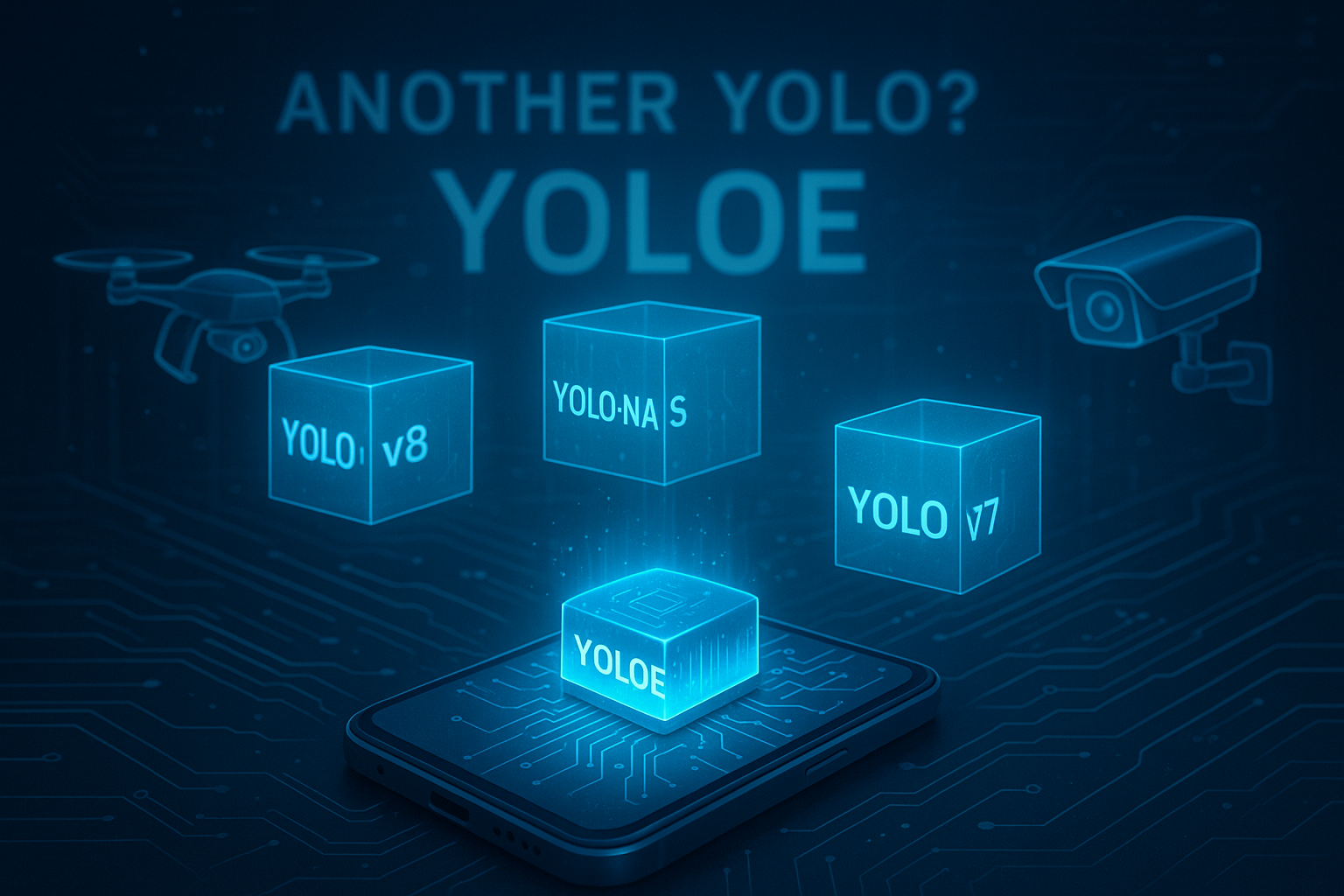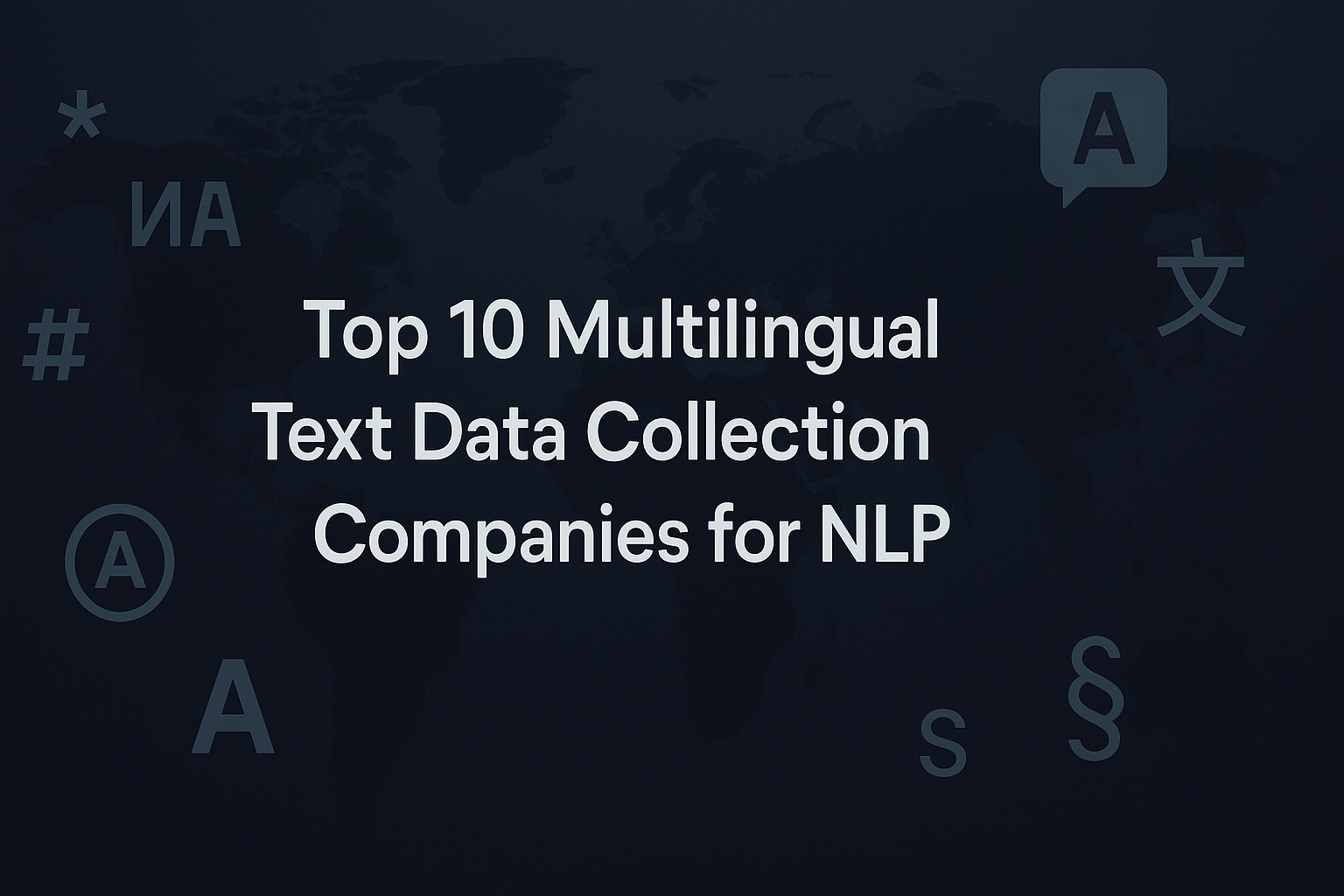Introduction
In the rapidly evolving world of computer vision, few names resonate as strongly as YOLO — “You Only Look Once.” Since its original release, YOLO has seen numerous iterations: from YOLOv1 to v5, v7, and recently cutting-edge variants like YOLOv8 and YOLO-NAS. Now, another acronym is joining the family: YOLOE.
But what exactly is YOLOE? Is it just another flavor of YOLO for AI enthusiasts to chase? Does it offer anything significantly new, or is it redundant?
In this article, we break down what YOLOE is, why it exists, and whether you should pay attention.
The Landscape of YOLO Variants: Why So Many?
Before we dive into YOLOE specifically, it helps to understand why so many YOLO variants exist in the first place.
YOLO started as an ultra-fast object detector that could run in real time, even on consumer GPUs. Over time, improvements focused on accuracy, flexibility, and expanding to edge devices (think mobile phones or embedded systems). The rise of transformer models, NAS (Neural Architecture Search), and improved training pipelines led to new branches like:
YOLOv5 (by Ultralytics): community favorite, easy to use
YOLOv7: high performance on large benchmarks
YOLO-NAS: optimized via Neural Architecture Search
YOLO-World: open-vocabulary detection
PP-YOLO, YOLOX: alternative backbones and training tweaks
Each new version typically optimizes for either speed, accuracy, or deployment flexibility.
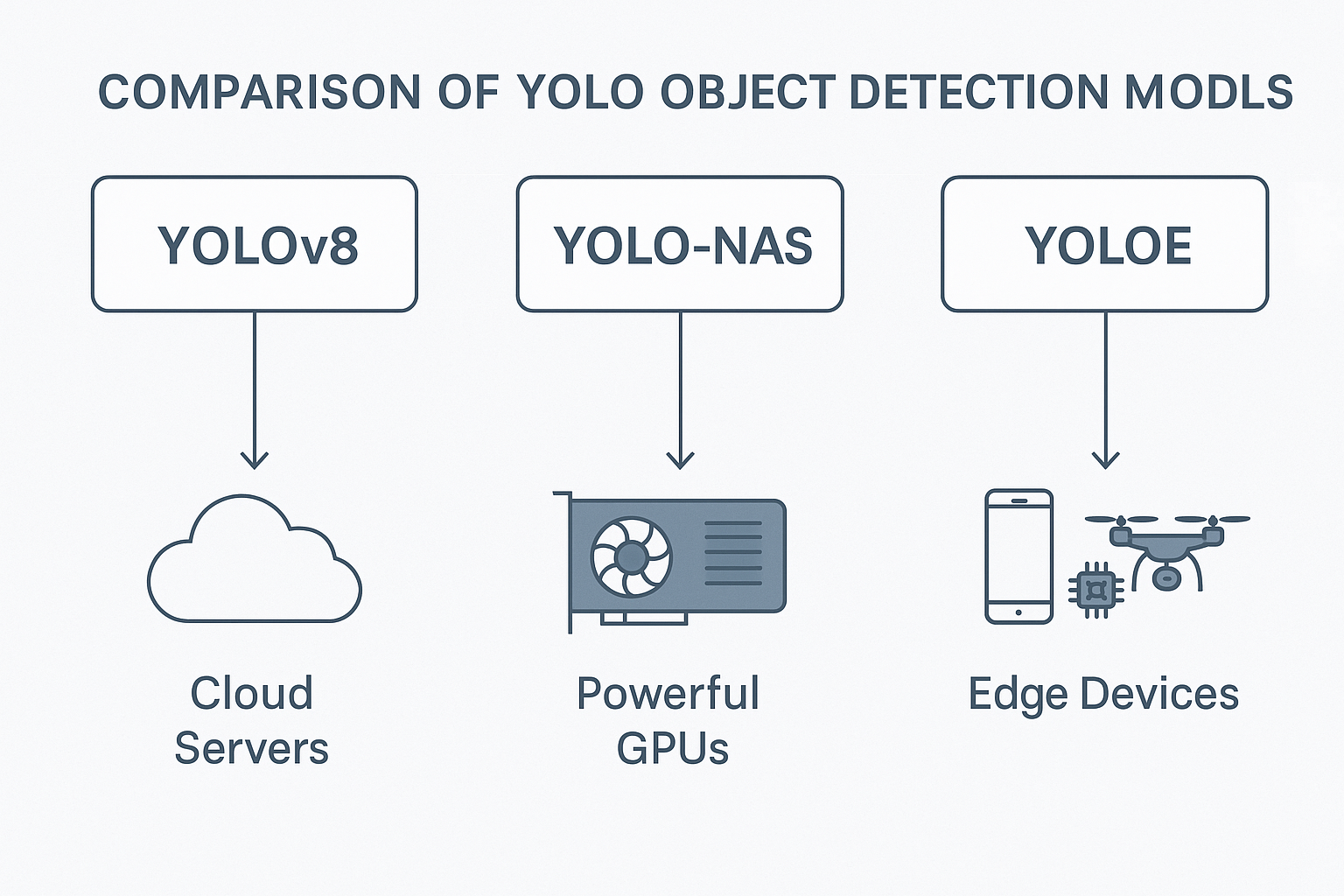
Introducing YOLOE: What Is It?
YOLOE stands for “YOLO Efficient,” and it is a recent lightweight variant designed with efficiency as a core goal. It was introduced by Baai Technology (authors behind the open-source library PPYOLOE), mainly targeted at edge devices and real-time industrial applications.
Key Characteristics of YOLOE:
Highly Efficient Architecture
The architecture uses a blend of MobileNetV3-style efficient blocks, or sometimes GhostNet blocks, focusing on fewer parameters and FLOPs (floating point operations).
Tailored for Edge and IoT
Unlike large models like YOLOv7 or YOLO-NAS, YOLOE is intended for devices with limited compute power: smartphones, drones, AR/VR headsets, embedded systems.
Speed vs Accuracy Balance
Typically achieves very high FPS (frames per second) on lower-power hardware, with acceptable accuracy — often competitive with YOLOv5n or YOLOv8n.
Small Model Size
Weights are often under 10 MB or even smaller.
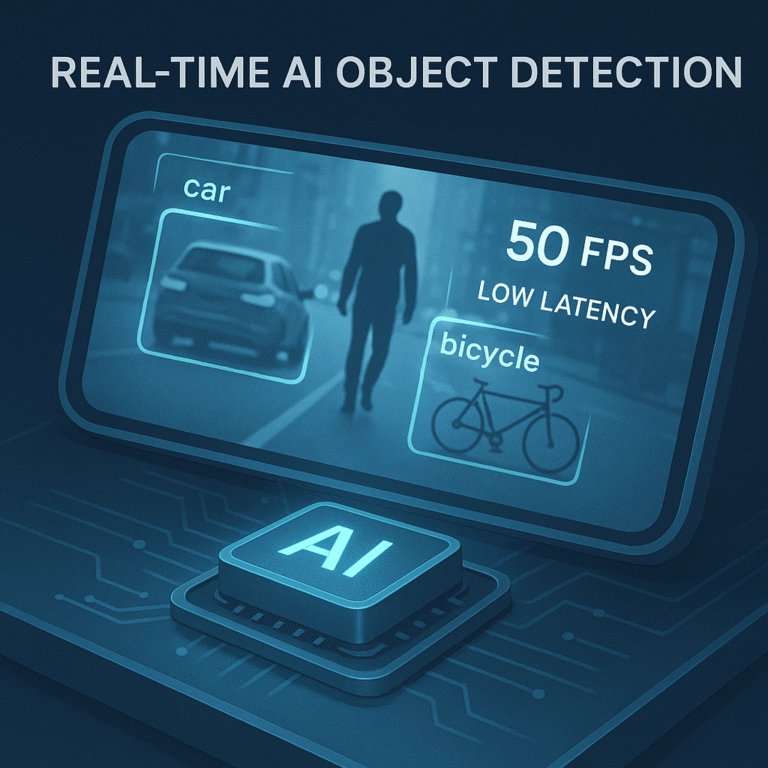
YOLOE vs YOLOv8 / YOLO-NAS / YOLOv7: How Does It Compare?
| Model | Target | Strengths | Weaknesses |
|---|---|---|---|
| YOLOv8 | General purpose, flexible | SOTA accuracy, scalable | Slightly larger |
| YOLO-NAS | High-end servers, optimized | Superior accuracy-speed tradeoff | Requires more compute |
| YOLOv7 | High accuracy for general use | Well-balanced, battle-tested | Larger, complex |
| YOLOE | Edge/IoT devices | Tiny size, super fast, efficient | Lower accuracy ceiling |
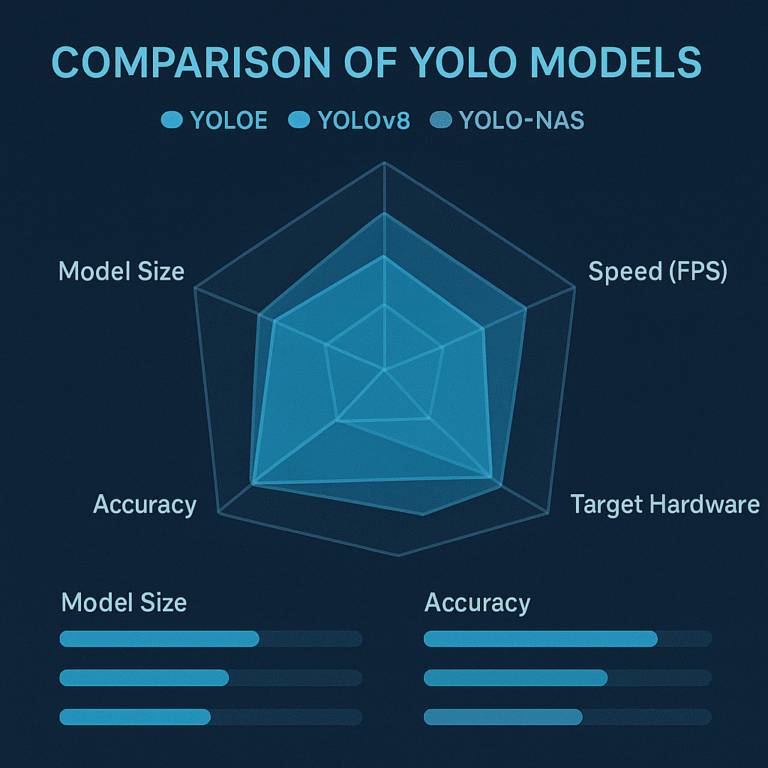
Do You Need YOLOE?
When YOLOE Makes Sense:
✅ You are deploying on microcontrollers, edge AI chips (like RK3399, Jetson Nano), or mobile apps
✅ You need ultra-low latency detection
✅ You want tiny model size to fit into limited flash/RAM
✅ Real-time video streaming on constrained hardware
When YOLOE is Not Ideal:
❌ You want highest detection accuracy for research or competition
❌ You are working with large server-based pipelines (YOLOv8 or YOLO-NAS may be better)
❌ You need open-vocabulary or zero-shot detection (look at YOLO-World or DETR-based models)
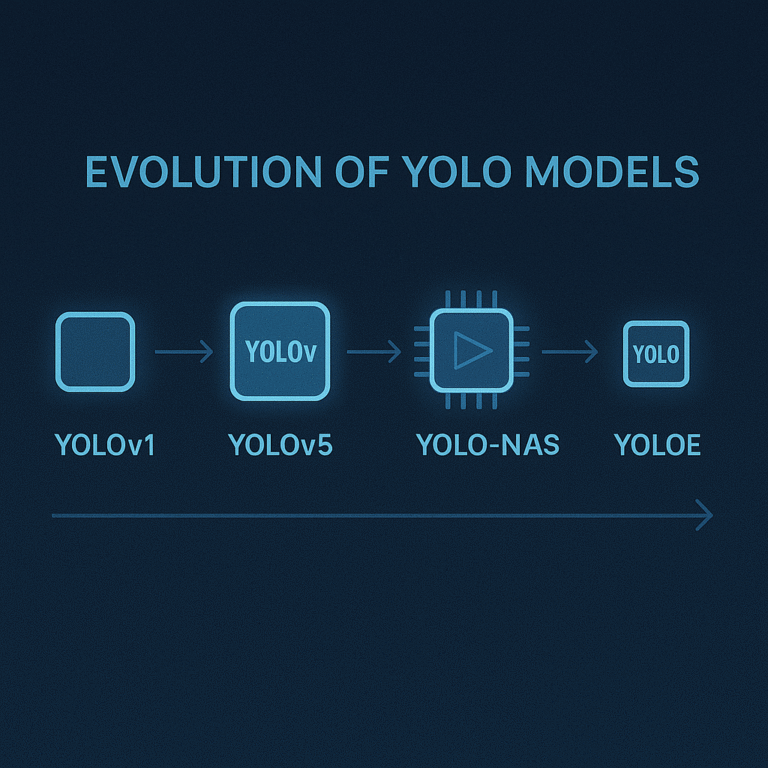
Conclusion: Another YOLO? Yes, But With a Niche
YOLOE is not meant to “replace” YOLOv8 or NAS or other large variants — it fills an important niche for lightweight, efficient deployment.
If you’re building for mobile, drones, robotics, or smart cameras, YOLOE could be an excellent choice. If you’re doing research or high-stakes applications where accuracy trumps latency, you’ll likely want one of the larger YOLO variants or transformer-based models.
In short:
YOLOE is not just another YOLO. It is a YOLO for where efficiency really matters.



